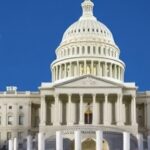In a stunning turn of events that has captivated political observers across the nation, New York City Mayor-elect Zohran Mamdani stepped into the Oval Office today for his first face-to-face meeting with President Donald Trump. The discussion, centered on combating rising crime rates in NYC and alleviating the city’s deepening affordability challenges, signals a potential thaw in what was once a frosty relationship marked by sharp public criticisms.
Mamdani, a progressive Democratic assemblyman who clinched a surprise victory in the mayoral race with a platform emphasizing social justice and economic equity, arrived at the White House amid whispers of unlikely collaboration. Trump, known for his hardline stances on law and order, extended an olive branch, framing the meeting as a pragmatic step toward ‘making New York great again.’ Sources close to the administration revealed that the agenda was laser-focused on two pressing issues: the surge in violent crime plaguing NYC’s streets and the skyrocketing costs of housing and living that are driving residents away from the city.
The encounter, lasting over an hour, was described by White House officials as ‘candid and productive.’ As Mamdani and Trump shook hands before the press pool, the mayor-elect stated, ‘New Yorkers deserve solutions, not slogans. Today, we put politics aside to address real pain points in our city.’ Trump echoed this sentiment, adding, ‘Zohran gets it—crime is out of control in NYC, and affordability is killing the American Dream. We’re going to work together to fix it.’
Unexpected Alliance Forms Amid NYC’s Escalating Crime Concerns
The backdrop to this Oval Office rendezvous is a city under siege by escalating crime statistics that have dominated headlines for months. According to the New York Police Department (NYPD)’s latest quarterly report, violent crimes in NYC rose by 12% in the first half of the year compared to 2023, with shootings up 18% in high-density neighborhoods like the Bronx and Brooklyn. Mamdani, during his campaign, had pledged community-based policing reforms, drawing ire from Trump who labeled such approaches ‘soft on crime’ in a series of Truth Social posts last fall.
Yet, in a pivot that stunned pundits, the two leaders delved into shared strategies. Trump reportedly pushed for federal funding to bolster NYPD resources, including the deployment of additional federal agents under a revived ‘Stop and Frisk’ model adapted for modern contexts. Mamdani countered with data from his assembly tenure, highlighting how targeted investments in youth programs and mental health services in Queens reduced recidivism by 25% over three years.
‘Crime isn’t just a numbers game; it’s about broken communities,’ Mamdani emphasized in post-meeting remarks. He detailed a joint proposal under discussion: a $500 million federal grant to NYC for hiring 1,000 new officers trained in de-escalation techniques while expanding surveillance tech in crime hotspots. Trump, ever the dealmaker, nodded approvingly, quipping, ‘We’ll build the best cops, the most effective—nobody does security like we do.’
Experts tracking urban policy were quick to weigh in. Dr. Elena Vasquez, a criminologist at Columbia University, noted, ‘This meeting could mark a turning point. Mamdani’s progressive lens combined with Trump’s resources might yield a hybrid model that addresses root causes without alienating communities.’ However, not all reactions were positive; civil rights groups like the ACLU expressed wariness, warning that any expansion of federal involvement in NYC policing could infringe on local autonomy.
To illustrate the urgency, consider the human toll: In the past year alone, over 300 homicides were reported in NYC, the highest since the early 2000s. Families in affected areas, from Harlem to Staten Island, have voiced frustration with delayed response times and underfunded precincts. Mamdani’s visit to the Oval Office underscores a bipartisan recognition that federal support is essential, especially as state budgets strain under post-pandemic recovery efforts.
Affordability Woes Take Center Stage in White House Talks
Shifting from the immediate threat of crime, the conversation pivoted to NYC’s affordability crisis, a powder keg that fueled Mamdani’s electoral upset. With median rents soaring to $3,500 per month in Manhattan—up 20% from five years ago—and grocery prices inflated by 15% due to supply chain disruptions, working-class New Yorkers are fleeing the city at record rates. The U.S. Census Bureau reports that NYC lost 90,000 residents between 2022 and 2023, many citing economic pressures as the primary driver.
Trump, drawing from his real estate background, advocated for deregulation to spur housing development. ‘We need to cut the red tape that’s strangling builders in NYC,’ he declared, proposing tax incentives for developers who prioritize affordable units. Mamdani, a vocal critic of unchecked development during his campaign, pushed back gently, advocating for rent stabilization extensions and subsidies for low-income families. Their dialogue reportedly bridged these views with a compromise: a federal affordability initiative that includes $2 billion in low-interest loans for mixed-income housing projects, coupled with protections against displacement.
One poignant example discussed was the plight of essential workers. Nurses, teachers, and transit operators—backbones of the city—now commute from as far as Pennsylvania to afford basics. Mamdani shared stories from his district, where a single mother of three faced eviction after her rent jumped 30%. ‘Affordability isn’t abstract; it’s about families holding on to the promise of New York,’ he said. Trump responded by highlighting his administration’s past successes, like Opportunity Zones that funneled $75 billion into underserved areas nationwide, including parts of NYC.
Economists monitoring the talks praised the focus. Sarah Klein, director of the Urban Institute’s housing policy center, commented, ‘Integrating federal economic tools with local insights could stabilize NYC’s market. If they deliver on subsidies, we might see a reversal in population decline.’ Challenges remain, however; labor unions in NYC have already rallied against potential deregulation, fearing it could exacerbate gentrification in neighborhoods like Williamsburg and the Lower East Side.
Statistics paint a grim picture: The city’s poverty rate hovers at 17%, with 1.8 million New Yorkers qualifying for food assistance. Mamdani’s administration plans to leverage this meeting for immediate relief, such as expanding SNAP benefits tailored to urban food deserts. Trump’s input? A promise to fast-track infrastructure projects, like subway upgrades, to lower commuting costs and boost economic mobility.
Behind the Scenes: Navigating Past Tensions to Forge Ahead
The road to this Oval Office meeting was anything but smooth. Mamdani and Trump clashed publicly throughout the mayoral campaign, with Trump mocking Mamdani’s ‘socialist’ policies on Fox News and Mamdani accusing the president of stoking division through inflammatory tweets about NYC’s ‘anarchy.’ A particularly heated exchange occurred in March when Trump blamed Mamdani’s progressive allies for a spike in subway crimes, prompting Mamdani to retort on MSNBC that ‘fear-mongering won’t solve systemic issues.’
Insiders reveal that backchannel communications, facilitated by moderate Republicans in Congress, paved the way. New York Senator Kirsten Gillibrand reportedly played a key role, urging both sides to prioritize governance over grandstanding. The meeting’s timing—mere weeks before Mamdani’s inauguration—adds urgency, as incoming city officials scramble to align with federal priorities ahead of the 2025 budget cycle.
Visuals from the Oval Office captured a moment of rare rapport: Mamdani, in a crisp suit, seated across from Trump beside the Resolute Desk, with aides scribbling notes. No major announcements emerged, but a joint statement affirmed commitment to ‘bipartisan action on urban challenges.’ Political analysts like those at Politico speculate this could influence midterm dynamics, positioning Mamdani as a bridge-builder in a polarized landscape.
Community leaders in NYC reacted with cautious optimism. Imam Faisal Abdul Rauf, a prominent figure in interfaith dialogues, said, ‘Seeing leaders from opposite ends collaborate gives hope to diverse communities hit hardest by crime and costs.’ Conversely, some far-left activists decried the meeting as a betrayal, organizing protests outside City Hall to demand uncompromised progressive policies.
Looking to the Horizon: Potential Impacts on NYC’s Future
As Mamdani returns to NYC, the ripples from this Oval Office dialogue are already being felt. City Council members are drafting resolutions to support the proposed federal partnerships, with hearings scheduled for next week on crime reduction metrics. On affordability, Mamdani’s team is preparing a task force that incorporates Trump’s suggested incentives while safeguarding tenant rights—a delicate balance that could redefine urban policy.
Long-term, success hinges on execution. If the $500 million crime grant materializes, it could fund not just more officers but also after-school programs proven to deter youth involvement in gangs, potentially dropping NYC’s juvenile arrest rates by 15-20%, per NYPD projections. For affordability, the $2 billion housing push might add 50,000 units over five years, easing pressure on waitlists that currently exceed 200,000 families.
Trump’s administration, facing its own pressures with national inflation at 3.2%, sees NYC as a test case for broader urban revitalization. Mamdani, eyeing legacy projects like green energy initiatives tied to federal funds, views this as a launchpad. As one anonymous White House advisor put it, ‘This isn’t just about New York—it’s a blueprint for cities nationwide grappling with crime and costs.’
Residents, from Wall Street executives to bodega owners, await tangible outcomes. Will enhanced policing reduce the 40 daily felony reports? Can subsidies lower the average household’s $1,200 monthly housing burden? The coming months will test this unlikely duo’s resolve, potentially reshaping NYC’s trajectory in an era of uncertainty.
Stay tuned as developments unfold; for now, this meeting stands as a beacon of possible unity in divided times.









